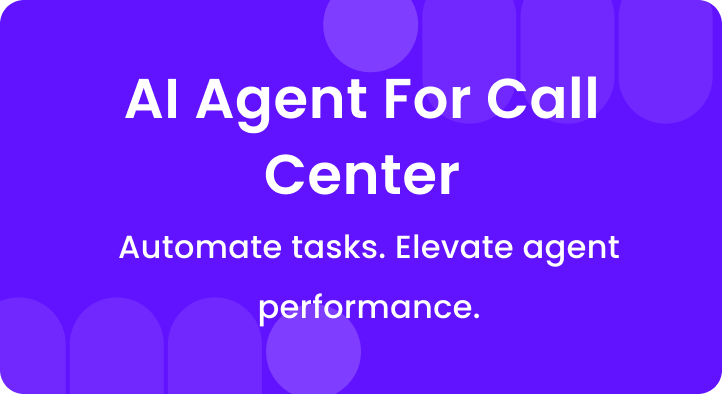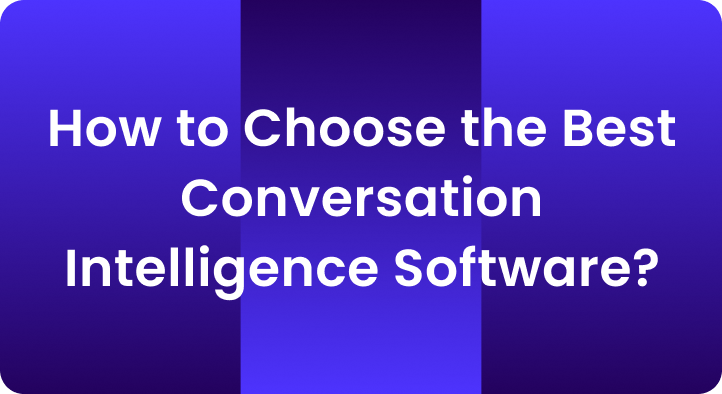Summary
Call center automation uses AI, RPA, NLP, and chatbots to handle repetitive tasks, streamline operations, and improve efficiency.
It boosts customer satisfaction with faster resolutions, empowers agents with real-time support, and cuts costs while ensuring compliance and data security.
The result: more personalized, scalable, and high-quality service without overburdening your team.
Are you struggling with the high call volumes, long wait times, and unsatisfied customers in your contact centers?
You’re not alone!
In today’s fast-paced world, many call centers face challenges that damage their customer satisfaction scores.
Today’s customers expect more—they demand instant attention and fast resolutions.
According to the Zendesk Customer Experience Trends Report 2025,”72% of customers want immediate service.”
Thanks to the cutting-edge technology that can automate almost every task without affecting the quality of service
That’s right—most of those repetitive, time-consuming tasks your agents deal with daily can be handled by technology.
And that’s where Call Center Automation comes into play.
Gartner projects that one in 10 agent interactions will be automated by 2026.
Automation provides you with powerful tools and technology to streamline your call centers’ operations, boost agent productivity, reduce costs, and elevate customer satisfaction.
Want to know how?
Keep reading to discover what call center automation is, what its types are, and how it can transform your call center.
A. What is call center automation?
Call center automation uses technology like speech analytics and chatbots to streamline customer interactions, reducing manual tasks, improving efficiency, and enhancing CX by automating processes such as call routing and data entry.
When a customer asks, “Where’s my order?” or “How do I reset my password?”
A virtual assistant (like a chatbot) interacts with your customers and answers their common queries.
It’s all possible with contact center automation tools.
It means your agents don’t have to waste time on these tasks. Automation frees them to focus on more complex or sensitive issues that need a human touch.
With advancements in Artificial Intelligence (AI), Robotic Process Automation (RPA), and Natural Language Processing (NLP), automated systems are becoming increasingly sophisticated.
They don’t just answer questions—they understand context, learn from past interactions, and improve over time.
Some common types of call center automation include: Automation doesn’t replace your human agents—it enhances them. By handling the routine stuff, automation gives your team the time and space to deliver personalized, high-quality service where it matters most. Here’s a breakdown of how automation is practically applied in various call center situations: Case study Bank of America’s AI assistant “Erica” handled over 1.5 billion client interactions in 2022, including balance checks and password resets. This reduced routine calls to agents and freed them to focus on complex cases. Case study A multinational telco used Genesys’ AI-powered routing to detect frustrated customers mid-call and reroute them to senior agents. Result: a 19% lift in FCR (First Call Resolution) and shorter average handle times. 3. Proactive customer engagement Case study Delta uses automated outbound notifications for flight changes and delays. During peak travel disruptions, these updates reduced inbound call spikes by over 30%, improving both agent workload and customer satisfaction. 4. Agent assistance and empowerment Case study Zoom integrated AI transcription and summarization into its contact center. Agents reported a 50% cut in after-call work, and managers used AI summaries to speed up quality audits and coaching. Today, many AI-powered call center software and tools are available to automate your contact center processes. Here are some of the many benefits you can get using these call center automation tools. Automation streamlines your operations by handling repetitive tasks like call routing, answering simple queries, and managing workflows. This frees your agents to focus on more important, complex issues needing expertise. Automating these processes reduces response times, minimizes errors, and significantly improves efficiency. You also create a consistent, seamless experience for your customers across all communication channels, whether phone or chat. With AI-powered automation tools, you can manage higher call volumes, optimize task assignments, and boost overall productivity in your contact center, making your operations faster and more effective. Using AI improves employee productivity by 66%. With AI-powered automation tools, you get real-time call summaries highlighting crucial moments and any problematic language used. This means you can quickly review what went well and what didn’t, without manually sifting through hours of calls. Moreover, these tools offer in-depth call analysis and search features that let you pinpoint patterns and trends in your agents’ performance. You are able to identify which agents excel at closing sales and which need extra training—without digging through tons of data. By leveraging these insights, you can provide targeted coaching and training, track progress through detailed reports, and ultimately improve your agents’ performance. Automation can make it easier for you to track performance and understand customer needs. For example, with automation tools like conversation intelligence, you can automatically collect and analyze data from every call. Imagine instantly seeing which issues arise most often and how your team handles them. This insight helps you make data-driven decisions, optimize processes, and enhance customer satisfaction. Automating your analytics turns complex data into clear, actionable information, so you can continuously improve your service. Automation can significantly elevate your customer satisfaction levels by streamlining your service processes. It’s evident from the above facts that automation can significantly boost your customer satisfaction levels by making your service faster and more efficient. Automation also improves self-service options like FAQs and chatbots, allowing customers to find answers anytime without waiting. In addition, AI tools can instantly translate languages, making your support accessible to international customers. By optimizing these processes, automation ensures you consistently meet and exceed customer expectations, enhancing their overall experience with your brand. Automation can help you cut operational costs by handling repetitive tasks that don’t require much attention. Businesses save an average of $1.5 million yearly by automating their processes. Automation significantly lowers labor costs by reducing the need for a large workforce to handle routine inquiries. This cost-saving power allows you to optimize your budget without sacrificing service quality. With automation, you can streamline operations, minimize manual work, and create a more cost-effective and efficient workflow for your contact center. In addition to improving efficiency, AI-driven call center automation tools can help safeguard sensitive customer data through PII redaction. This ensures that personally identifiable information (PII) is automatically identified and removed from transcripts and call summaries, reducing the risk of data breaches. With automated PII redaction, your business can stay compliant with regulations like GDPR and CCPA while protecting customer privacy. This feature not only improves security but also enhances trust with your customers, as it ensures that sensitive information is kept safe and secure. Call center automation covers a wide range of technologies, each aimed at improving different parts of customer service. Let’s take a look at the top five types of automation that are transforming call centers. This type of automation streamlines customer interactions by enabling computers to understand and respond to human language. It powers virtual assistants, chatbots, and translation services, making interactions smoother. NLP breaks down and analyzes text to understand meaning. It helps automate tasks like responding to common queries and transcribing conversations. By integrating NLP, contact centers can offer faster, more accurate responses, enhance customer service, and streamline operations. This technology improves efficiency and makes customer interactions more natural and effective. AI-powered chatbots and virtual assistants transform contact centers by handling real-time customer inquiries. These tools use artificial intelligence to simulate natural conversations, providing quick and accurate responses to common questions and issues. They operate around the clock, ensuring customers receive support anytime, without waiting for an agent. By automating routine tasks like order tracking and appointment scheduling, these AI solutions free up human agents to tackle more complex problems, boosting overall efficiency and customer satisfaction. Their continuous learning capability also means they get better over time, making interactions more personalized and effective. Automated call routing directs incoming calls to the most suitable agent based on their skills and availability, reducing wait times and boosting resolution rates. IVR systems, on the other hand, let callers interact with a computer system using voice commands or keypad inputs, handling routine inquiries and routing calls appropriately. Also, IVR can reduce customer service costs by up to 30%. Together, these technologies enhance productivity, cut down on call abandonment, and improve customer satisfaction by ensuring that each call is handled promptly and by the right person. Robotic Process Automation (RPA) uses software bots to handle repetitive tasks in call centers, such as updating customer information or processing invoices. For example, instead of manually updating a CRM after each call, RPA bots automatically pull data from call transcripts and update records. This speeds up workflows, reduces errors, and frees up agents to focus on more complex issues. With RPA, business processes can be completed up to 20 times faster than by an average human. With RPA, tasks that used to take minutes now happen instantly, improving both efficiency and customer satisfaction. It’s like having an extra set of hands that works tirelessly and accurately, all day long. Workforce Management Automation streamlines the scheduling and tracking of call center staff. It uses software to predict call volumes and optimize shift schedules, ensuring you have the right number of agents at peak times. For example, automated systems analyze historical data instead of manually creating schedules to forecast staffing needs and adjust shifts accordingly. This helps in reducing overstaffing or understaffing issues, cuts down on administrative work, and enhances agent satisfaction by creating more balanced workloads. A call center can use specialized automation tools for call monitoring, quality analysis, understanding customer sentiment, boosting agent performance, coaching agents, and improving revenue. With the right contact center automation software, you can boost efficiency and streamline operations. These tools simplify everything from training agents to enhancing the customer experience. When choosing an automation tool for customer service, consider your goals, needs, and budget. Tools like Enthu.AI automate workflows for agents, leading to happier customers and employees. 1. How does automation improve call center efficiency? Automation boosts efficiency by handling repetitive tasks (like answering FAQs, data entry, and routing) which reduces agent workload, decreases average handling time, improves first-contact resolution, and enables 24/7 self-service. 2. How does automation improve call center efficiency? No, automation is not expected to completely replace human agents. It automates routine tasks, freeing agents to focus on complex, high-value interactions that require empathy, critical thinking, and nuanced problem-solving. The future is a hybrid, human-AI model. 3. What are the latest trends in call center automation? Latest trends include Generative AI for agent assistance and call summarization, advanced Conversational AI (chatbots and voicebots), Sentiment and Speech Analytics for real-time customer feedback, and Predictive Analytics to anticipate customer needs. 4. What are the top automation technologies used in call centers? The top technologies are:B. Common use cases for call center automation
1. Customer self-service
2. Call routing and triage
5. Data analysis and reporting
B. Benefits of call center automation?
1. Streamline business operations
2. Improve agent performance
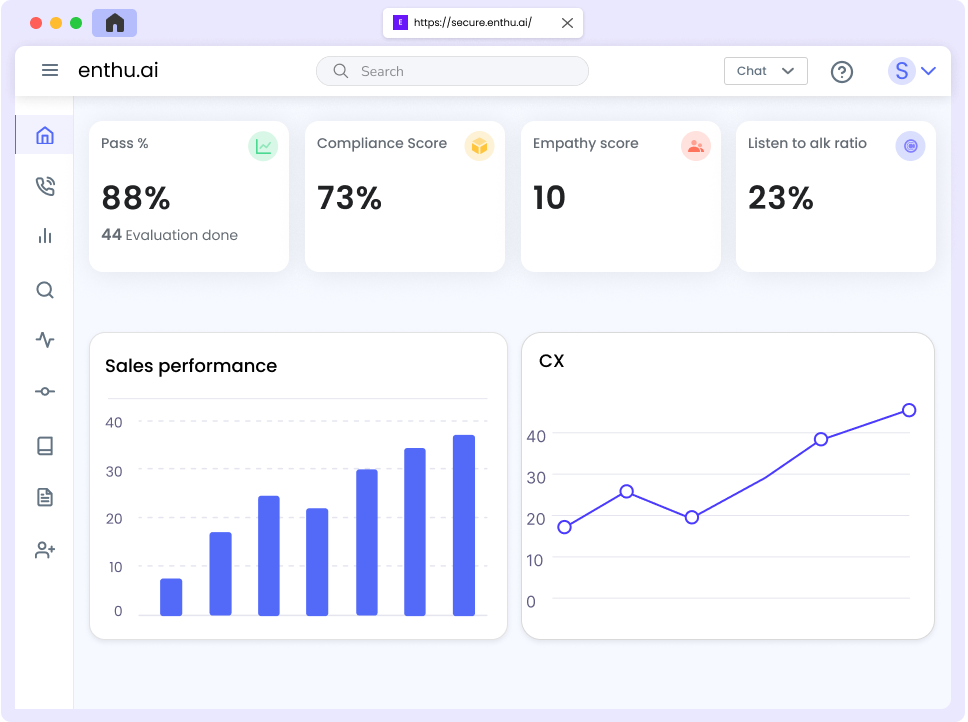
3. Enhance analytics and insights
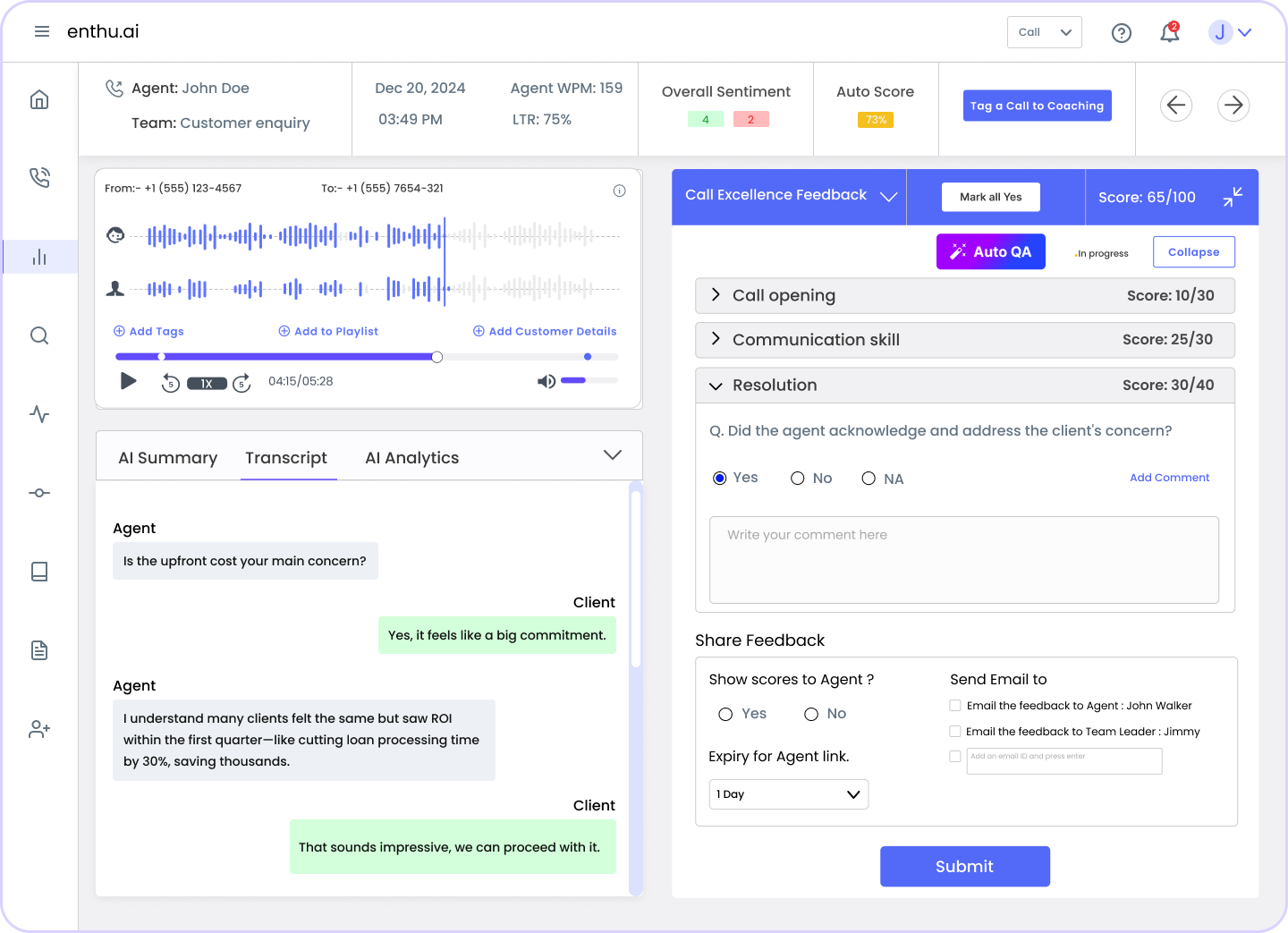
This means you’ll get real-time insights into call patterns, customer sentiment, and agent performance without manually sifting through data.4. Improve customer satisfaction levels
Imagine automating routine tasks such as ticket management or handling common queries. This frees up your team to tackle more complex issues, leading to faster resolutions and more personalized service. 5. Reduce operational costs
6. Ensure PII Redaction for Compliance
C. 5 types of contact center automation
1. Natural Language Processing (NLP)
2. AI-powered chatbots and virtual assistants
3. Automated call routing and IVR systems

4. Robotic Process Automation (RPA)
5. Workforce management automation
Conclusion
FAQs
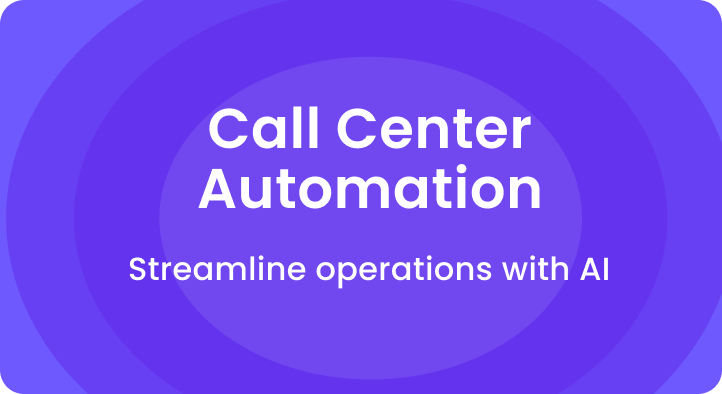
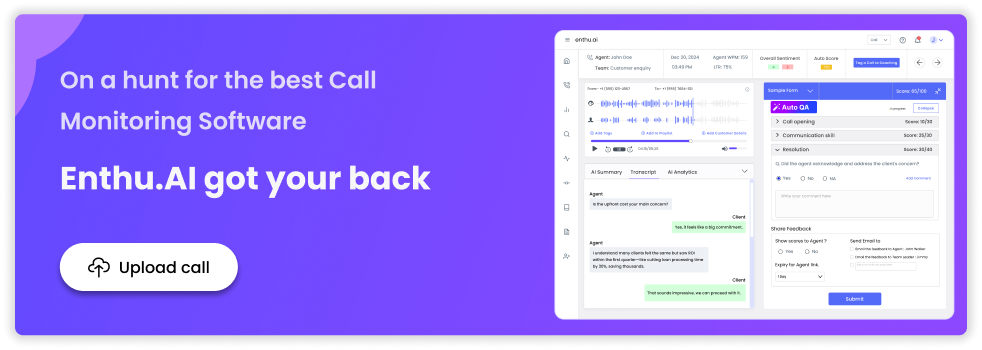
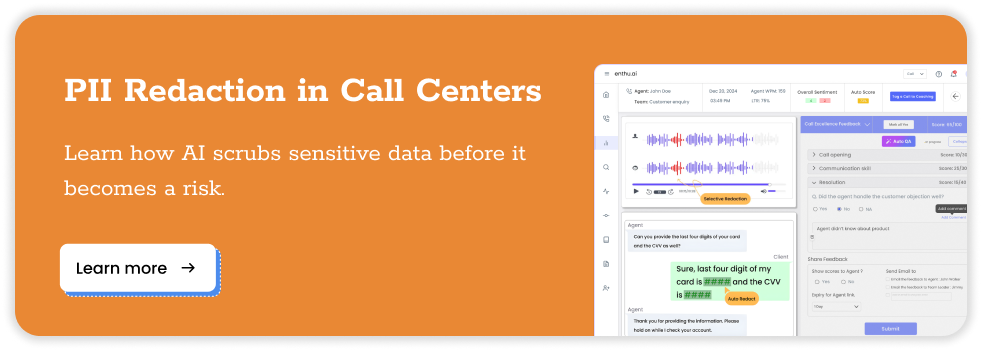


 On this page
On this page

